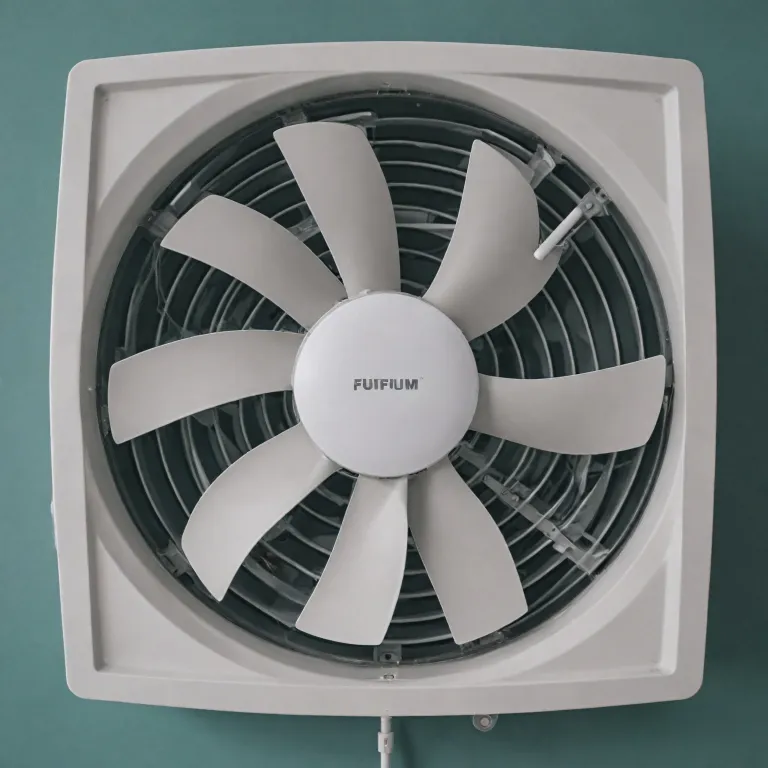The Function of a Duct Fan in Portable Air Conditioners
The Importance of an Efficient Duct Fan
Portable air conditioners have become indispensable in many homes and offices, providing much-needed relief during the sweltering summer months. However, a key component that ensures the effective operation of these units, one that often goes unnoticed, is the duct fan.
A duct fan plays a crucial role in the cooling system of a portable air conditioner. Its primary function is to facilitate air movement through the ductwork, which is essential for both maintaining the desired temperature and ensuring the efficient operation of the unit. This fan aids in the distribution of cooled air into the room while also expelling warm air out of the space, critical for maintaining optimal performance and energy efficiency.
View this detailed guide on the
role of HVAC flex ducts in portable air conditioners to further understand the intricacies involved.
These fans are not created equal, and their performance can vary significantly based on design and construction. Factors such as CFM (cubic feet per minute) ratings, blade design, and whether it is an inline or exhaust fan, can significantly impact the performance of your portable air conditioning unit.
An inline booster fan, for example, is specifically designed to increase airflow and can be integrated into existing ductwork to enhance air distribution. This can be particularly beneficial in situations where airflow is insufficient due to long duct runs or bends in the system, ensuring that the utmost comfort is maintained in every corner of the room.
Moreover, some duct fans come with variable speed controllers, allowing users to adjust fan speed according to their cooling needs, which is a significant advantage when it comes to customizing your cooling experience. Investing in a high-quality, quiet inline duct fan can result in a significant reduction in operational noise, which is a common complaint with less efficient models.
In essence, the duct fan, with its strategic placement and function, is integral to the efficacy and energy efficiency of portable air conditioners. Its selection, installation, and maintenance can greatly affect not only the performance of your air conditioning system but also your overall satisfaction with the product.
Benefits of Using a Duct Fan
Advantages of Integrating a Duct Fan
Incorporating a duct fan in your portable air conditioner setup presents several compelling advantages that can significantly enhance the efficiency and effectiveness of your cooling system. Here's a closer view:
- Improved Airflow: One of the primary benefits of using a duct fan, specifically an inline duct fan, is its ability to increase the airflow within your portable air conditioner's ventilation system. This can lead to a more consistent distribution of cool air, ensuring that even the farthest corners of the room are adequately cooled.
- Energy Efficiency: A well-implemented duct fan can help maintain your desired temperature more efficiently, potentially reducing the workload on the portable air conditioner. Consequently, this could lead to lower energy consumption and reduce electricity bills over time, making it a cost-effective improvement to your cooling strategy.
- Enhanced Air Quality: With products like the mixed flow and pro quiet fans, these duct fans are designed to operate with low noise levels while facilitating better air circulation. This not only improves the comfort level due to the quieter environment but can also contribute to enhanced air quality by promoting better ventilation.
- Variable Speed Control: Many duct fans come equipped with a fan speed controller or a variable speed option. This allows you to adjust the fan speed according to the cooling demands of your space, providing a tailored and more comfortable cooling experience.
Implementing a duct fan as a booster or an exhaust component becomes even more appealing when considering models like the booster duct or infinity cloudline, which are engineered to optimize airflow and minimize sound, known as the quiet inline options. For more details on
understanding the components of a portable air conditioner, be sure to explore further insights.
Types of Duct Fans for Portable Air Conditioners
Exploring Different Varieties of Duct Fans
Duct fans are essential components of portable air conditioners, aiding in the efficient movement of air throughout the system. When assessing the options available in the market, understanding the different types of duct fans can significantly enhance your choice.
One of the most popular is the
inline duct fan, known for its versatility and efficiency. These fans fit neatly within the duct system, providing a streamlined approach to airflow management. The inline fan is highly regarded for being both a quiet inline solution and offering high cfm (cubic feet per minute) capabilities, making it ideal for maintaining consistent air circulation in various room sizes.
Booster fans, another excellent option, are specifically designed to enhance airflow in a system that might struggle with optimal air distribution. By utilizing a duct booster or a booster fan, you can effectively mitigate low air pressure challenges, ensuring that the air conditioner performs at its best.
For those seeking precise control, the addition of a
speed controller can be invaluable. These controllers allow users to adjust fan speed in response to fluctuating cooling demands.
Variable speed settings provide further flexibility, enabling energy savings without compromising on comfort.
The
infinity cloudline model and its counterpart, the
cloudline pro, stand out with advanced features such as mixed flow technology and low noise output. The pro quiet models integrate state-of-the-art design elements that prioritize quiet operation, crucial for those sensitive to noise.
Investing in dependable
inline booster systems can also bolster performance. A typical setup might include a 4-inch inline or larger models such as the 6-inch or 8-inch inline units, depending on the size of the area being cooled. For those shopping, it's essential to compare the price point against the features offered by the product.
While choosing, don't forget to view options that have earned energy efficiency distinctions, such as the
energy star label, which ensure optimal performance with minimal environmental impact.
To further enhance understanding of portable air conditioner components, I recommend exploring this related article on the
role of insulated flexible ductwork in portable air conditioners.
Choosing the Right Duct Fan for Your Portable Air Conditioner
Selecting the Best Duct Fan for Your Portable AC Setup
Choosing the right duct fan for your portable air conditioner can greatly impact efficiency and comfort. Here’s a guide to help you make an informed decision:
- CFM Rating: The Cubic Feet per Minute (CFM) rating is crucial as it indicates the airflow rate. For optimal performance, select a fan with a CFM rating that matches the requirements of your portable AC. Inline fans, such as the cfm inline and inch inline options, are popular for their suitability in confined spaces.
- Type of Fan: Depending on your setup, you might need a booster fan, inline duct fan, or exhaust fan. Inline duct fans like the pro quiet and cloudline pro are known for their mixed flow and low noise operation, which can be ideal for residential use.
- Noise Levels: If noise is a concern, consider fans labeled as quiet or pro quiet. These fans are designed to provide efficient airflow while maintaining minimal noise.
- Variable Speed Settings: A fan with a speed controller allows you to adjust the airflow based on current needs. This is beneficial in maintaining desired temperature levels without overworking the air conditioner.
- Build and Design: Look for durable materials and design features like stable fan blades and sturdy duct systems. High-quality builds often result in products that stand the test of time. Brands offering products like infinity cloudline and quiet inline generally prioritize quality and durability.
- Price Consideration: While price is an important factor, it’s also critical to focus on the product's long-term efficiency and performance. Investing slightly more in well-reviewed options can lead to savings on energy bills and reduced maintenance costs in the long run.
- Additional Features: Some fans include advanced features like automation or smart controllers. Exploring options with a star rating system can aid in selecting a reliable fan.
Taking into account these factors will ensure that you select a duct fan that complements your portable air conditioner's functionality and enhances its performance.
Installation and Maintenance Tips for Duct Fans
Simple Steps to Install and Maintain Duct Fans
When setting up a duct fan in your portable air conditioner, it's essential to ensure smooth and efficient airflow. Here's a straightforward guide to help you with installation and maintenance.
- Preparation: First, measure the duct inlet and ensure that the fan, such as an inline booster, fits correctly. Consider the fan's cfm (cubic feet per minute) capability to match your cooling needs.
- Installation: Secure the fan within the ducting system using a reliable mount. Most fans, like the cfm inline or quiet inline models, come with installation kits. Carefully attach the duct fan with a screwdriver, making sure it aligns perfectly with the ducts to prevent rattling or air leaks.
- Positioning: Proper placement enhances performance. Consider positioning an inline fan near the cooling unit to maximize the air boost or at the end for equal distribution. For larger spaces, an inch inline fan could be more effective.
- Speed Control: Install a variable speed controller to adjust the fan speed as needed, ensuring efficient and quiet operation. This accessory is especially beneficial for mixed flow and pro quiet models, helping balance noise and airflow.
- Regular Maintenance: Cleaning fan blades is crucial to prevent dust buildup and blockages. Periodically check the fan and the entire system for wear and tear, ensuring the blades and exhaust system stay in good condition.
- Troubleshooting: Common issues like noise or reduced airflow can often be resolved by repositioning or cleaning the fan. If problems persist, referring to the product manual or consulting a professional is advisable.
Proper installation and regular maintenance of duct fans not only enhance the performance of your portable air conditioner but also extend its lifespan. Remember, choosing energy-efficient models, like those with an infinity cloudline or star rating, could result in long-term savings and a quieter environment.
Common Issues and Troubleshooting Duct Fans
Identifying and Resolving Common Duct Fan Problems
Owners of portable air conditioners may occasionally encounter issues with their duct fans. These components play a crucial role in optimizing the cooling system's performance, and understanding how to troubleshoot them effectively is essential.
One common issue is a reduction in airflow. This can occur when the duct fan becomes obstructed by debris or dirt. Regular cleaning of the fan blades and surrounding areas can prevent such build-ups. It's also wise to periodically check the fan's air intake and exhaust path for any blockages.
Another problem might be unusual noise levels. Although many fans, like the quiet inline fan models, are designed to minimize noise, abnormal sounds could indicate loose components or a problem with the fan's bearings. Inspecting these parts and tightening any loose screws can often resolve the issue. For persistent noise complaints, consider replacing worn parts with pro quiet or low noise models, such as the infinity cloudline series.
Variations in fan speed can also indicate issues. If the fan speed fluctuates unexpectedly, ensure that the fan's speed controller is functioning correctly. It's important to confirm that the controller is compatible with your specific duct booster system and to recalibrate if necessary.
Lastly, it's crucial to address underperformance, which may manifest as low CFM inline efficiency. This could be due to a failing motor or issues with the inline booster configuration. In some cases, investing in a higher quality booster fan or an inch inline model with higher CFM capability might be necessary.
If all else fails, consulting a professional or reviewing product manuals can provide additional guidance on resolving duct fan problems efficiently.

